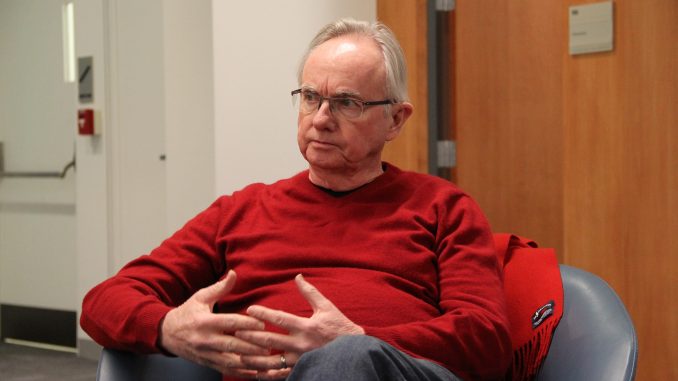
In the spring of 2015, advertising students Lindsey Casella, Daniel Yesilonis and Michelle Bouh were assigned a survey project. They aimed to find a topic relevant to undergraduates and survey students for their quantitative research class.
The trio decided to poll students on whether they thought students would attend football games if there was an on-campus stadium.
They surveyed 397 students and found 65.74 percent of the respondents would attend a game if the stadium was on campus.
“Sixty-five percent felt that they would be more likely to attend games if there was an on-campus stadium,” said Casella, a senior advertising major. “They felt that their peers would be more likely to go by 86 percent.”
The team said the survey could have been enhanced if they talked to more commuters—they surveyed 37. A random sample instead of a convenience sample would also have been more effective, Yesilonis added.
According to the 2005 book “Seeing Through Statistics” by Jessica Utts, convenience samples are unreliable and in many cases, they are not likely to represent the entire population.
“Despite our best efforts we struggled to get a statistically significant commuter sample size so we were unable to say that it’s solid,” Yesilonis said. “Mortality was an issue. Not everyone answered every question.”
The group found its subjects by reaching out to people on their own Facebook pages, Facebook class groups and the advertising department listserv. They added the advertising department was the only one which offered to help with the survey.
After conducting the survey, they put the results into a chart that the company The Research Advisors—an organization that focuses on creating accurate research surveys—had produced. The chart gave a breakdown of population sizes and number of people needed to be surveyed for the survey to be valid.
“Think about things like Gallup polls that are done for elections—they’re all based on the same statistical formulas so you can project the results of the sample onto the population,” advertising professor Chuck McLeester said.
As of Fall 2014, 28,408 undergraduate students were enrolled in the university. The 397 respondents are about 1.4 percent of the undergraduate population.
For a 25,000-person population size, The Research Advisors say 378 respondents to the survey are needed to attain a 95 percent confidence rating. It also recommends the sample for all surveys be random.
McLeester claimed this one of the best and most legitimate student surveys he has seen.
One of the strongest aspects of it was the students did not ask about support for or against the potential stadium, but instead asked if more people would go to games, he said.
“People might say, ‘I would attend more games if it was on campus, but I don’t favor having it on campus because of I don’t like the impact that it would have on the neighborhood or I think that $100 million could be spent on something else,’” McLeester said.
After their findings were returned, the group took the results to TSG because it’s supposed to represent the student population, and they believe that the survey accurately represented the students.
“This gives us some validity in terms of the student body and their excitement for a stadium,” Student Body President Ryan Rinaldi said. “I think it was really important to show something that was statistically significant.”
Rinaldi said TSG is confident enough in the survey to take its findings to the administration.
“Even though only 400 students took it, the way that it was done represents the whole kit and caboodle,” Rinaldi said.
The students who conducted the survey are also confident enough in their data to believe it represents the entire student body.
“We believe that our data shows that as a whole more students would attend games if there was an on-campus stadium, and they feel that the game day experience would be better,” Yesilonis said.
Jonathan Gilbert can be reached at jonathan.irwin.gilbert@temple.edu or on Twitter @jonnygilbs96.


Be the first to comment